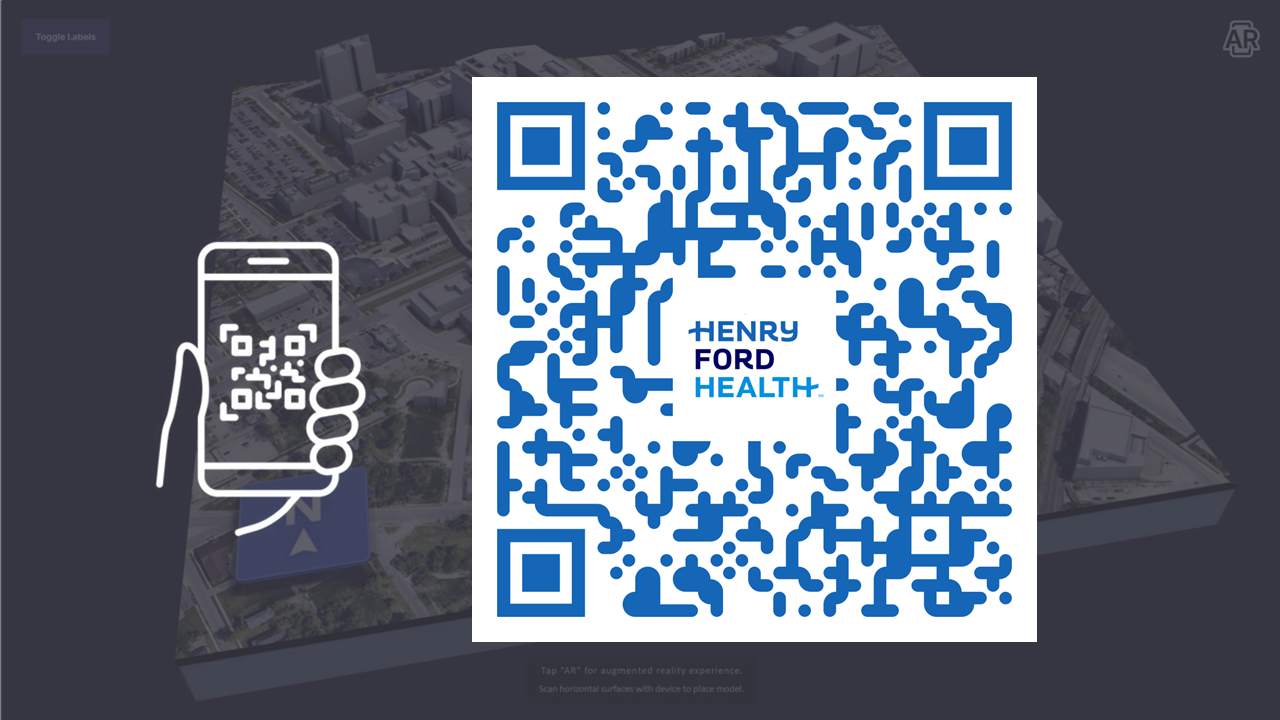




Henry Ford Health AR
Healthcare design project built with Rhino, Maya and Vectary for web with AR.
Try the app: https://app.vectary.com/p/0PyZPkjDrSoYAlQLyA9ahR
Typically, I build my VR and AR apps as custom solutions due to confidentiality. In this instance the project was public and I am able to utilize a third-party solution, Vectary, and it was a fun exercise. As it is public I am also allowed to share the work for a change. The models were initially built in Revit and Rhino. Those models are exported and optimized/ organized in Maya. The initial models was over 25 million vertices, and I got this end product (including the context models) down to under 250,000 vertices. Vectary presented a nice interface and UI to use and the learning curve was pretty fast. I liked that you can add labels and maintain some control over their appearance, and being able to view the model on desktop/ laptop as well as mobile was a great feature. Additionally, if the model and textures remain under a certain threshold it can be used in augmented reality. For this model, I baked all of the lighting and ambient occlusion in Maya with Arnold, and to maintain a seamless look between the non-AR and AR versions I had to utilize the maps for lighting and remove all in-scene lights.